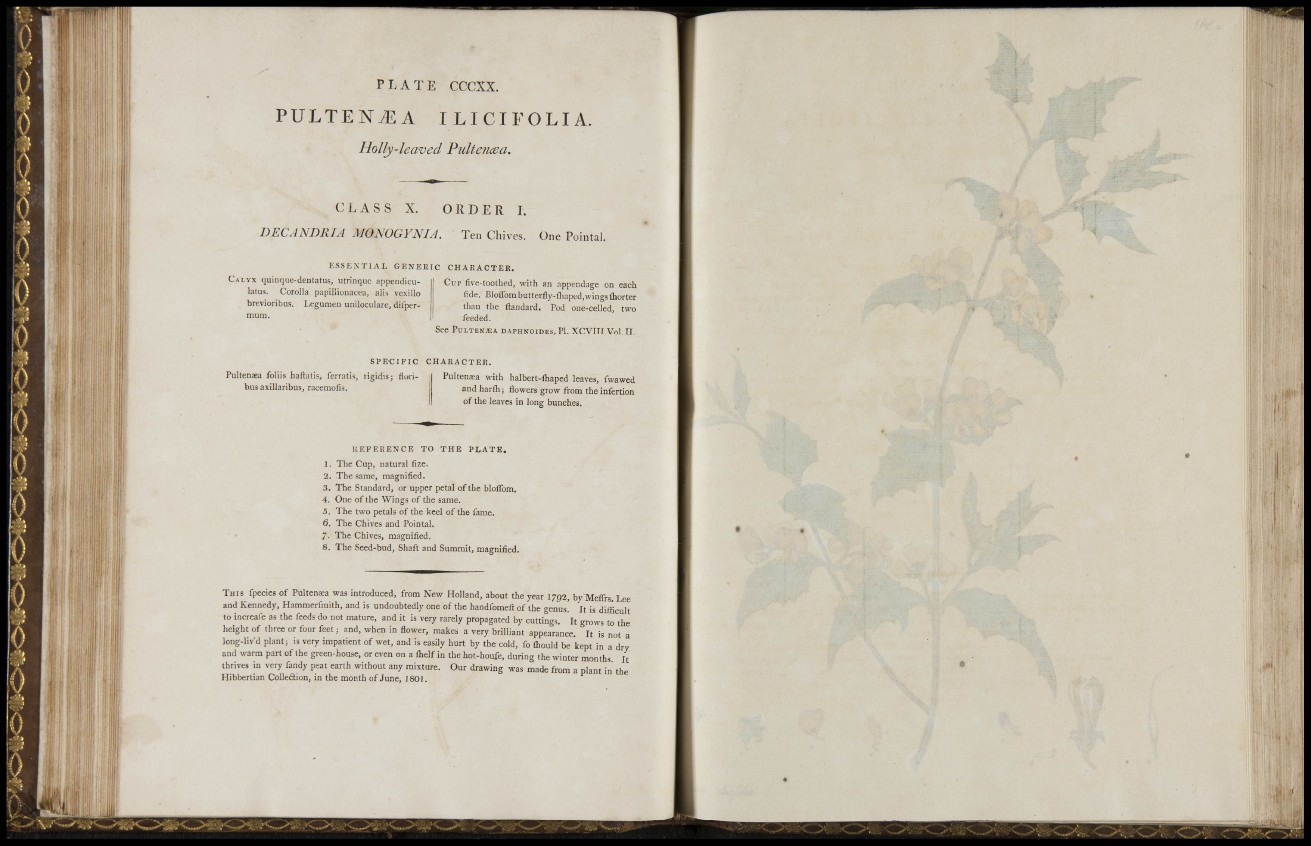
li'r
iîi;
p . i | |
J!:i :
l!H
i i
P L A T E CCCXX.
P U L T E N J i A I L I C I F O L I A .
Holly-leaved Pulteniea.
C L A S S X. ORDER L
DECANDRIA MONOGYNIA. Ten Chives. One Pointai.
E S S E N T I A L GENEKIC CHARACTEK.
C A L Y X quinqiie-deiitatus, utrinque appendiculatus.
Corolla papillionacea, alis vexillo
brevioribus. Leguraen uniloculare, difpermmii.
CuF five-toothed, with an appendage on each
(ide. Bloflbmbutterfly-iliaped.wingsfliorter
than the ftandard. Pod one-celled, two
reeded.
See POLTEN^A DAPHNOIDES, PI. XCVili.VoLII.
S P E C I F I C
Pultenaea foliis hafiatis, ferratis, rigidis; floribus
axillaribus, racemofis.
C H A R A C T E R .
Pultenasa with halbert-lhaped leaves, fwawed
and harili; flowers grow from the infertion
of the leaves in long bunches.
K E F E R E N C E TO THE PLATE.
1. The Cup, natural iize.
2. The same, magnified.
3. The Standard, or upper petal of the bloflbm.
4. One of the Wings of the same.
5. The two petals of the keel of tlie fame.
6. The Chives and Pointal.
7. The Chives, magnified.
8. The Seed-bud, Shaft and Summit, magnified.
T H I S fpecies of Pultensea was introduced, from New Holland, about the year 1792, by Meffrs Lee
and Kennedy, Hammerfmith, and is undoubtedly one of the handfomeft of the genus! It is diificult
to increafe as the feeds do not mature, and it is very rarely propagated by cuttings. It grows to the
height of three or four feet ; and, when in flower, makes a very brilliant appearance. It is not a
long-livd plant; is very impatient of wet, and is easily hurt by the cold, fo (liould be kept in a dry
and warm part of the green-house, or even on a ihelf in the hot-houfe, during the winter months It
thrives in very fandy peat earth without any mixture. Our drawing was made from a plant in the
Hibbertian CoUeélion, in the month of June, 180].
Vf ! .
!(• ,, ,1 liil!!'!!
• • • ilil «